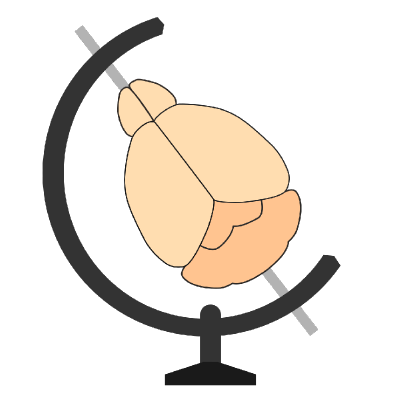Whole brain cell detection and registration with the brainmapper command line tool#
Note
brainmapper was previously called the cellfinder command-line interface tool.
This command-line tool was renamed with the release of cellfinder version 1.0.0.
You can read about these changes on our blog.
If you have previously been using the cellfinder command-line interface in your work, you’ll most likely want to follow the links in the blog post to:
Upgrade your version of the
cellfinderpackage,Install
brainglobe-workflowsto getbrainmapper, the same command-line tool but under its new name.
Although the brainmapper command line tool is designed to be easy to install and use, if you’re coming to it with fresh eyes, it’s not always clear where to start.
We provide an example brain to get you started, and also to illustrate how to play with the parameters to better suit your data.
Caution
The test dataset is large \(\approx 250\)GB. It is recommended that you try this tutorial out on the fastest machine you have, with the fastest hard drive possible (ideally SSD) and an NVIDIA GPU.
Tutorial#
The tutorial is quite long, and is split into a number of sections.
Please be aware that downloading the data and running brainmapper may take a long time (e.g., overnight x2) if you don’t have access to a particularly high-powered computer, or fast network connection.
Note
It is possible to detect cells in a whole brain image and register this data to an atlas entirely within a graphical
user interface. If you have not used brainmapper before, we recommend you take a look at the
analysing brainwide distribution of cells tutorial.
Please go through the following sections in order:
